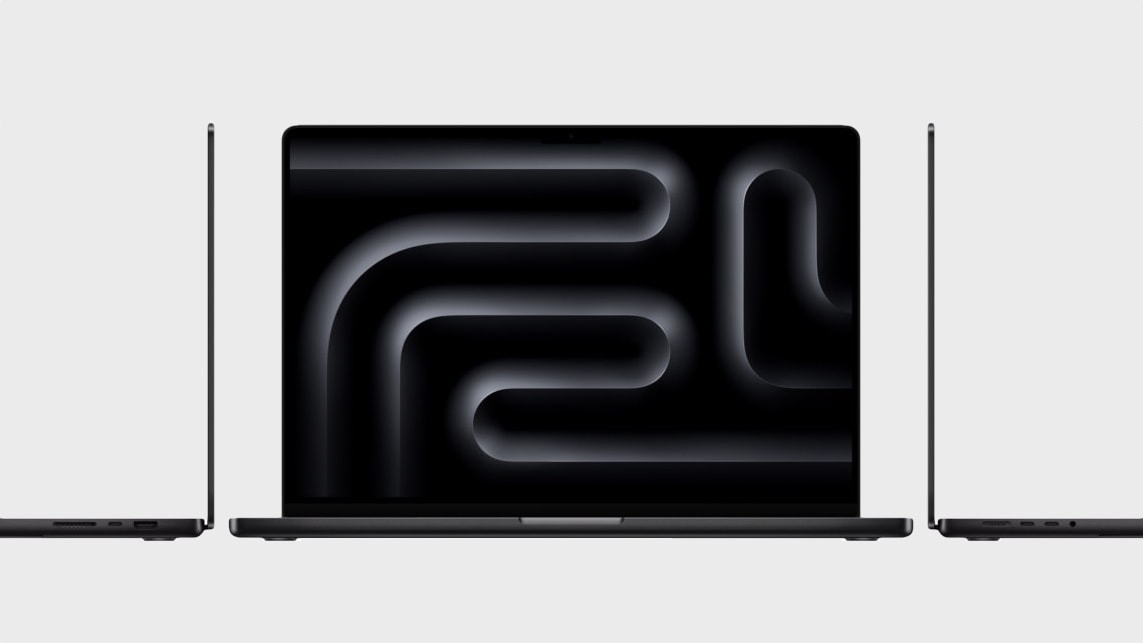I occasionally run across someone criticizing Apple because the MacBook Pro supports only a single external display. But that’s not a limitation of most MBP models — only the budget versions.
It was a drawback of the first professional-grade MacBook with Apple silicon, which is probably why people are still confused today. However, today there are multiple options for those who want two or more external screens.
Confusion stems from Apple silicon transition
External displays make MacBook users more productive. More screens mean more space to work in, and that can be critical when you’re using a 14-inch notebook. Even a 16-inch screen is small compared to a desktop monitor.
All MacBooks offer second-screen support. So the question is, which ones can handle more than one?
It’s a question that only became important when Apple brought out its own Mac processors in 2020. Before then, Intel-based Pro models offered plenty of additional screens. But the very first MacBook Pro with Apple silicon supported only a single external display.
That’s because it used an Apple M1 processor. The 2020 MBP was part of the Intel-to-Apple transition and was essentially an Intel model with a new chip plugged in. A chip that wasn’t completely up to the job of powering a professional-class laptop.
External display limitation now only affects consumer MacBooks
The M1 was never intended for pro-grade computers. It was for Macs aimed at consumers, like the MacBook Air and Mac mini from a couple of years ago. But it was the best Apple silicon available in 2020, so it went into the MacBook Pro released that year, too.
As soon as Apple began bringing out notebooks with the M1 Pro and M1 Max chips, the limitation disappeared. These were designed for professionals. That includes support for multiple additional displays. Both the 14-inch and 16-inch models can connect to up to three.
M2 family
This all started over again with the Apple M2 released in mid-2022. This is a consumer-focused processor and supports only a single additional display. That makes it right for the 13-inch MacBook Air from 2022 and the 15-inch model from this summer.
But the more-recent MacBook Pros that run the M2 Pro and M2 Max can connect to many more screens. The 14-inch and 16-inch MacBook Pro from early 2023 can handle either two or four depending on whether they have a Pro or the Max version of the processor.
To keep things confusing, there’s also a throw-back 13-inch MBP that Apple released in summer 2022. It has a basic M2, not a Pro or Max, so it offers only a second screen, not more.
M3 family
The cycle repeats with the M3 family introduced in October 2023. The newest MBPs with M3 Pro support two displays up to 6K at 60Hz. Go with the M3 Max version instead, and the notebook supports up to four displays (three of these at 6K, one at 4K).
But because nothing can be simple, Apple also introduced a version of the MacBook Pro last month with the basic M3 processor. This model supports only a single external display.
There’s no doubt this is confusing. It’s bad enough that Apple has a support document just to lay out how many external screens each MacBook Pro can connect to.
A nomenclature problem
Part of the external display confusion stems from the way people tend to refer to Apple processors. “M1” is a single processor but the term also is used sometimes as shorthand for a family of processors: M1, M1 Pro, M1 Max and M1 Ultra. The same goes for M2 and M3.
It leads to confusion. It’s easy to refer to an “M3 MacBook Pro” when the notebook is really an M3 Pro MBP. And someone can read “M3 MacBook Pro” and, because the M3 supports only one extra display, assume the notebook being discussed has the same limitation. In reality, it can take on two additional screens.
Spread the word
If you already knew that MacBook Pro models with Apple’s Pro or Max chips support multiple external displays, then this article isn’t for you. But don’t assume everyone knows.
Turns out those few MBPs that are limited to just one extra screen confused a lot of people into thinking the limitation is universal. So if you know someone still using an Intel MacBook, you might make sure they are also aware that Apple silicon isn’t as limited as they might think. They might be waiting for a feature that’s been available since 2021.


